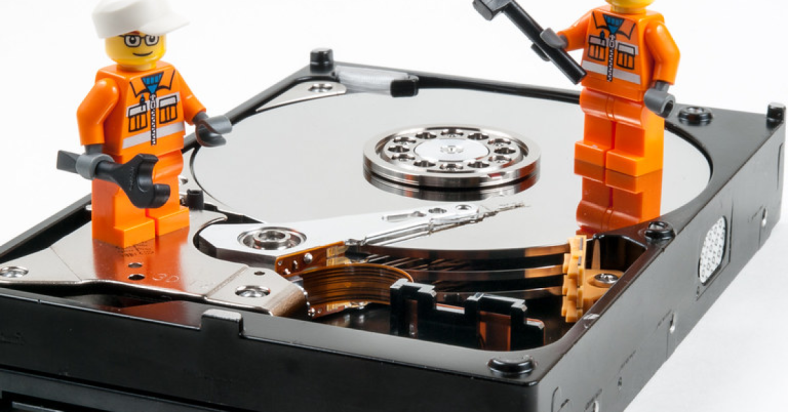In this article, I will discuss how to repair and fix hard drives using the CHKDSK /F /R command.
July 2025: Enhance your computer’s performance and eliminate errors with this cutting-edge optimization software. Download it at this link
- Click here to download and install the optimization software.
- Initiate a comprehensive system scan.
- Allow the software to automatically fix and repair your system.
Overview of CHKDSK Command
CHKDSK /F /R: Repair & Fix Hard Drives
When it comes to fixing hard drive issues on your Windows computer, the CHKDSK command is a powerful tool to have in your arsenal. This command can help you repair disk errors, recover bad sectors, and ensure that your file system is in good shape.
To run CHKDSK with the option to fix errors and recover readable information, use the /F parameter. Simply open a Command Prompt window with administrator privileges and type chkdsk /F followed by the drive letter you want to scan.
If you want CHKDSK to locate bad sectors and recover readable information, use the /R parameter. This option will take longer to complete as it scans every sector on the disk. To run CHKDSK with both options, simply type chkdsk /F /R followed by the drive letter.
After running CHKDSK, be sure to check the results in the Command Prompt window to see if any errors were fixed or bad sectors were recovered. This command can help keep your hard drive running smoothly and prevent potential data loss.
Understanding CHKDSK Parameters
- Check Disk (CHKDSK) is a Windows utility that can check the integrity of your hard drive and fix any errors it finds.
- /F Parameter:
- The /F parameter tells CHKDSK to fix any errors it finds on the disk.
- To use the /F parameter, open a command prompt with administrative privileges and type chkdsk /f followed by the drive letter you want to scan (e.g. chkdsk /f C:).
- /R Parameter:
- The /R parameter tells CHKDSK to locate bad sectors on the disk and recover readable information.
- To use the /R parameter, open a command prompt with administrative privileges and type chkdsk /r followed by the drive letter you want to scan (e.g. chkdsk /r D:).
Comparing CHKDSK /F, /R, and /X
- Open Command Prompt as an administrator by searching for it in the Start menu, right-clicking on it, and selecting “Run as administrator.”
- Type
chkdsk /f C:and press Enter to initiate the disk checking process on the C: drive. - Wait for the process to complete and follow any on-screen instructions provided by CHKDSK.
- Restart your computer to allow CHKDSK to fix any errors it found during the scan.
CHKDSK /R
- Open Command Prompt as an administrator by searching for it in the Start menu, right-clicking on it, and selecting “Run as administrator.”
- Type
chkdsk /r C:and press Enter to initiate a scan that locates bad sectors and recovers readable information. - Confirm that you want to schedule the disk check for the next system reboot by typing
Yand pressing Enter. - Restart your computer to allow CHKDSK to scan and repair the hard drive.
CHKDSK /X
- Open Command Prompt as an administrator by searching for it in the Start menu, right-clicking on it, and selecting “Run as administrator.”
- Type
chkdsk /x C:and press Enter to dismount the drive before performing a scan. - Follow any on-screen instructions provided by CHKDSK and wait for the process to complete.
- Restart your computer to allow CHKDSK to fix any errors it found during the scan.
How to Run CHKDSK Commands Effectively
To effectively run CHKDSK commands on your hard drive, you can use the /F and /R parameters to fix any errors and recover readable information from bad sectors.
First, open Command Prompt with administrative privileges by searching for it in the Start menu, right-clicking, and selecting “Run as administrator.”
Next, type in “chkdsk /f /r X:” (replace X with the drive letter you want to scan) and press Enter to initiate the process.
CHKDSK will then scan the drive for any errors and attempt to fix them. If bad sectors are found, it will attempt to recover any readable information stored in them.
It’s important to note that running CHKDSK with the /F and /R parameters may take some time, depending on the size and condition of your hard drive.
Interpreting CHKDSK Results and Logs
When running CHKDSK with the /F or /R option, it will scan for and attempt to fix any errors on your hard drive. After the scan is complete, you will be presented with a summary of the results. It is important to interpret these results correctly to understand the health of your hard drive.
Pay close attention to any messages that indicate errors, bad sectors, or corruption. These issues can impact the overall performance and reliability of your hard drive. If CHKDSK detects any problems, it will attempt to repair them automatically.
If CHKDSK is unable to repair certain errors, you may need to take additional steps to address the issues. This could involve running CHKDSK in offline mode or using other tools to fix the problems.
In some cases, CHKDSK may also generate a log file that provides more detailed information about the scan results. This log file can be useful for troubleshooting any persistent issues with your hard drive.
Frequently Asked Questions
What is f and r in CHKDSK?
In CHKDSK, /f stands for fixing structural issues in the file system and directory, while /r searches for corrupted parts of the physical hard drive and attempts to recover data from them.
Is chkdsk f safe?
Is chkdsk f safe? Yes, chkdsk is safe as it scans the hard drive for errors and can improve computer safety. However, using the chkdsk /r command may result in data deletion if it finds a bad sector, so it is important to backup your data before running it.
What is the best CHKDSK command?
The best CHKDSK command is CHKDSK /R as it not only checks for disk errors like CHKDSK /F, but also locates and attempts to recover readable information from bad sectors on the target hard disk.
Can CHKDSK fix a failing hard drive?
Can CHKDSK fix a failing hard drive?
CHKDSK can scan a hard drive for errors and correct those errors, but it may not be able to fix a failing hard drive. It can help in identifying and repairing file errors and bad sectors, but if a hard drive is failing due to physical damage, CHKDSK may not be able to resolve the issue.

